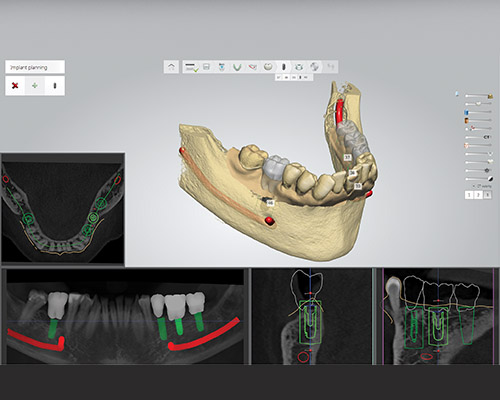CAD-CAM DESIGN
CAD-CAM (Computer-Aided Design and Computer-Aided Manufacturing) design is a technological process used in many industries, including dentistry. This process combines computer-aided design and manufacturing to create accurate and customised products.
In dentistry, CAD-CAM design is used to design and fabricate dental restorations, crowns, bridges, implant abutments and other dental products.
The process usually involves the following steps:
- Scanning (CAD): The patient's teeth or implant site are "scanned" using a 3D scanner to create an accurate digital model.
- Design (CAD): Based on the digital model, the dentist or dental technician designs the prosthesis or other dental product using a computer. In this phase, details of shape, size and aesthetics are determined.
- Manufacturing (CAM): The CAD-CAM system transmits the completed designs to a 3D printer or a CNC (computer-controlled milling machine) system, where the dental products are manufactured exactly according to the designs.
- Finishing and fitting: The finished prosthesis or appliance is then checked and fine-tuned to ensure an accurate fit and the desired functionality.
CAD-CAM design allows dentists and dental technicians to create prostheses and appliances faster and more accurately. This reduces the time and human intervention required for traditional laboratory processes, improving the efficiency and results of dental treatments.


